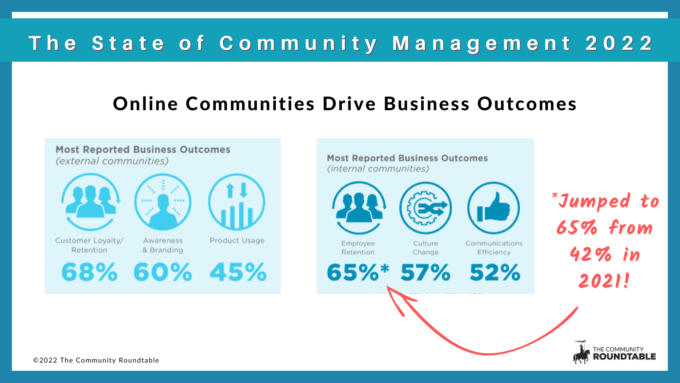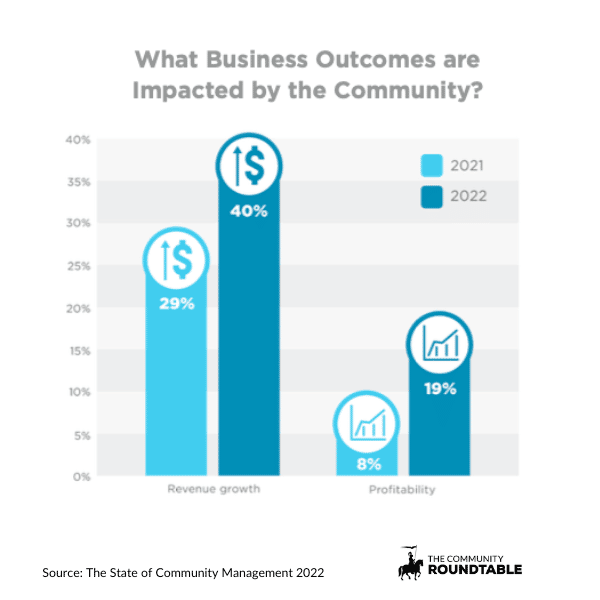The Culture competency of the Community Maturity Model™ addresses habits, motivators (intrinsic and extrinsic), social norms, communications, decision-making processes, development processes, and learning approaches in an organization and/or community.
Organizations that acknowledge and prepare for cultural challenges — and change — will better navigate and reduce risks when building their community program. A trend in the 2022 State of Community Management report is community programs’ increasing ability to connect community participation to tangible business outcomes.

The forced shift to remote and hybrid work due to COVID-19 saw organizations leveraging communities to connect with employees, customers, and prospects. By tying this to business outcomes community teams can prove the value of community approaches, which leads to positive perceptions of — and increased spending for — community.
In 2022, more community programs can directly attribute sales-related metrics to community — namely higher retention/new purchase rates, increased qualified leads, and reduced sales cycles. This is exciting, especially when coupled with the two highest growth outcomes (external factors) cited this year.
While revenue growth and profitability aren’t prevalent enough to crack the top three just yet, their year-over-year jump shows many community teams are developing the business skills needed to characterize their program in terms old-school executives understand. They’re proving community’s impact on the top and bottom line.

Use community to lead the way.
For culture change, that is. Globally, we’re facing a hybrid future where connecting with employees and customers (and everyone else, really) will take place in person and online. Community’s incredibly effective at powering behavior change, and if you’re reading this, you probably know a thing or two about community. Leverage that power to help facilitate organizational change.
Get more community ideas and advice in our 2022 State of Community Management report:

